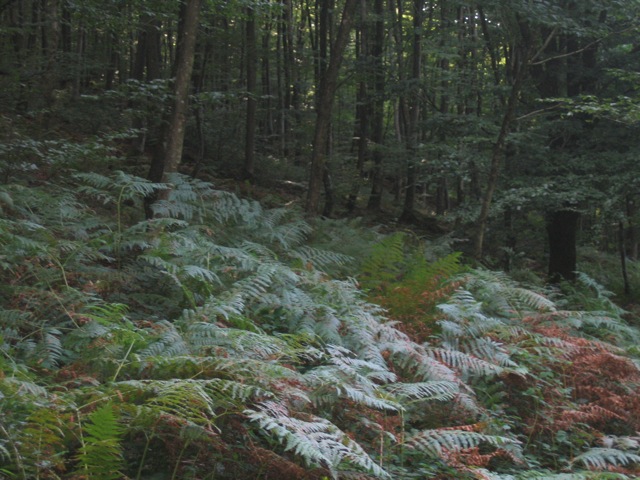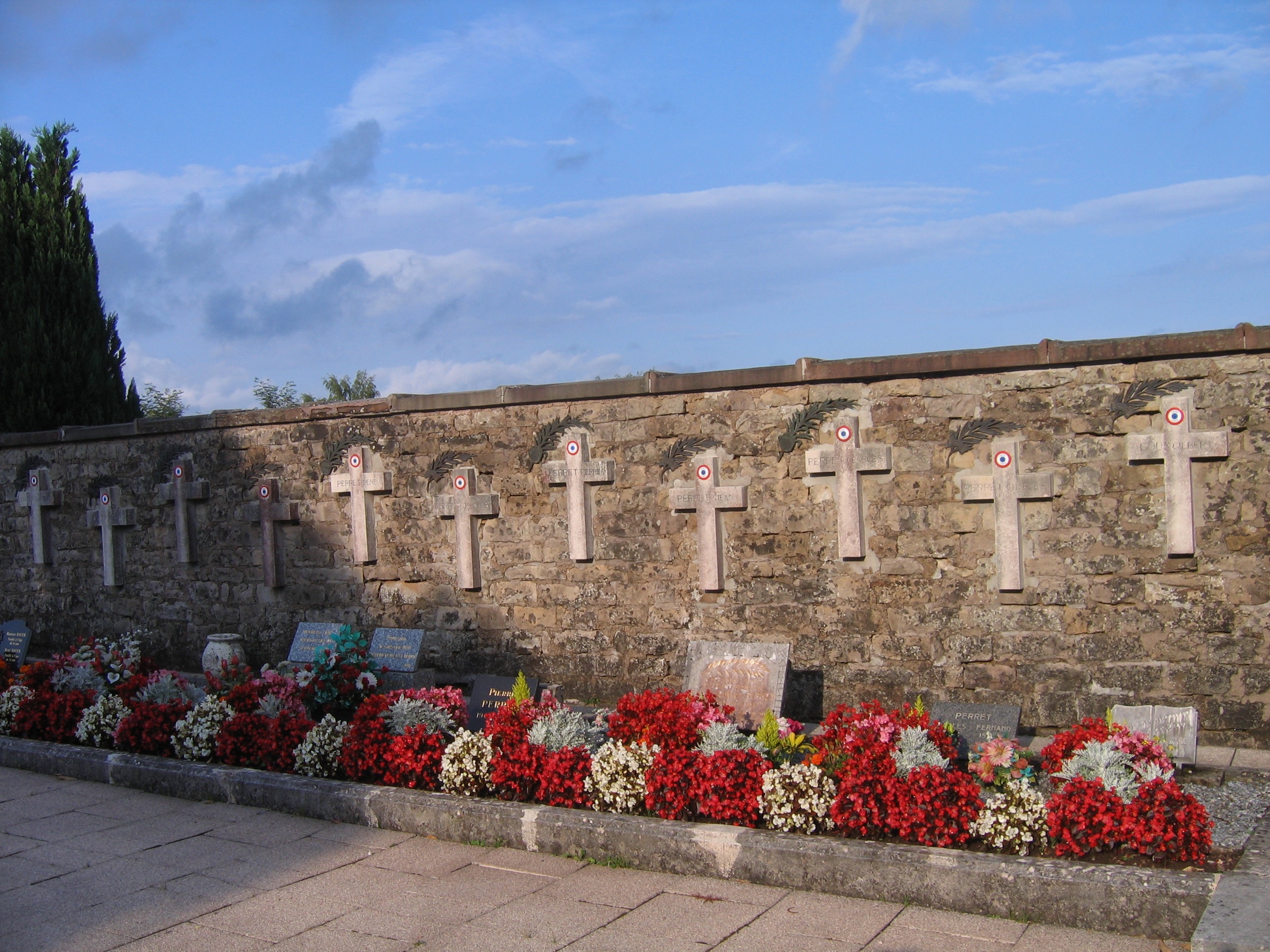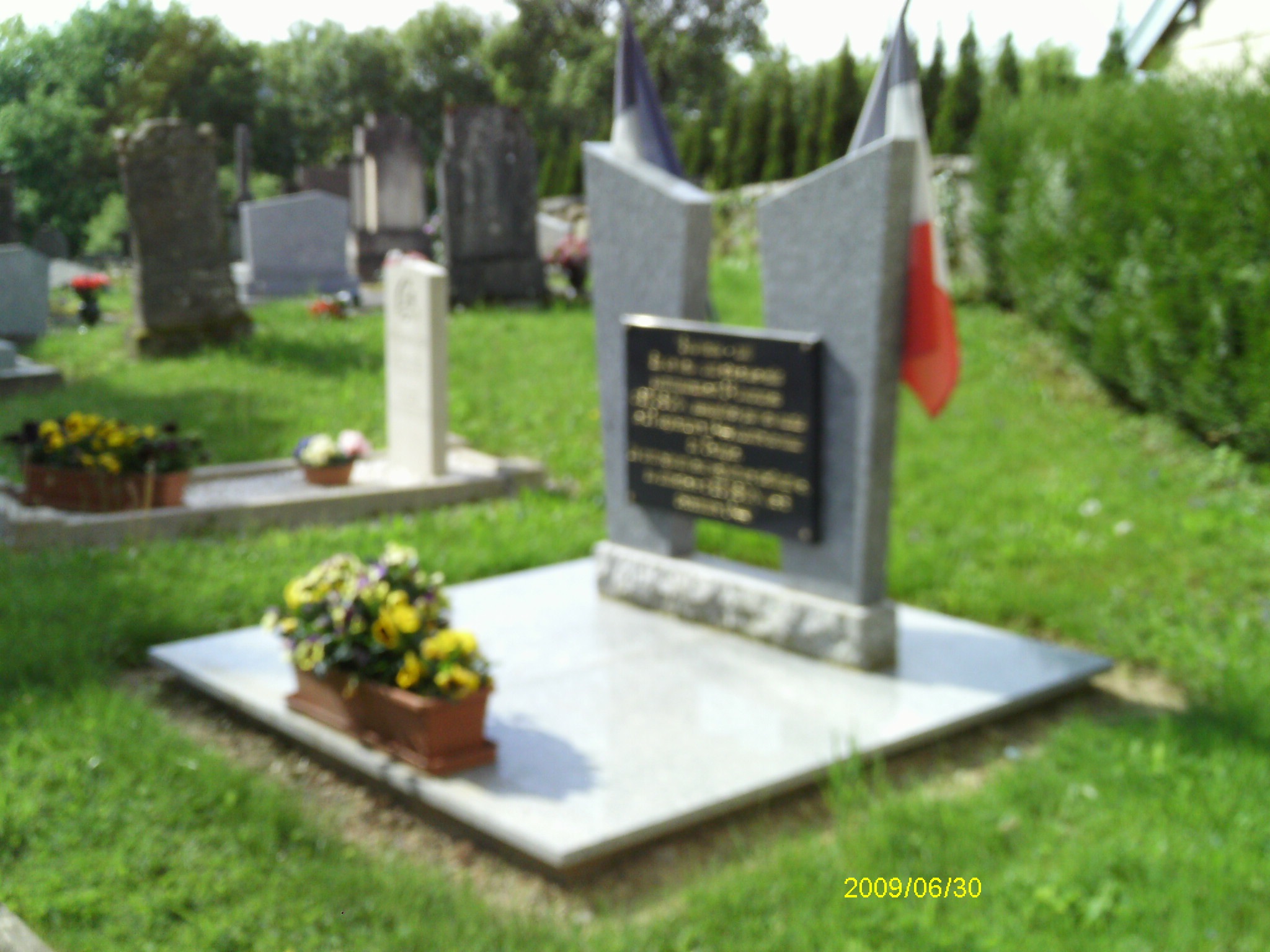Camps in the Woods
The escaped POWs and others who were in hiding from the occupiers were sheltered in several camps in the woods around Etobon. Spots like La-Fontaine-qui-Saute (the Leaping Fountain), Tête de Cheval (Horse’s Head), la Goutte Evotte (Evotte Spring), Isaac’s Mill and the Wolf Mill were used at various times in 1944 as makeshift camps. Building tools and cooking utensils were provided by the Etobonais and those who lived there did most of the construction and daily housekeeping themselves.
 The woods near Tête de ChevalOf course, the French provided the food. Isaac’s Mill was used as a supply drop for provisions: coffee, wheels of the local hard gruyere cheese, called Comté, sugar, stoves and cooking pots were kept there, according to Jules Perret. Other supply tents and caches were hidden throughout the woods.
The woods near Tête de ChevalOf course, the French provided the food. Isaac’s Mill was used as a supply drop for provisions: coffee, wheels of the local hard gruyere cheese, called Comté, sugar, stoves and cooking pots were kept there, according to Jules Perret. Other supply tents and caches were hidden throughout the woods.
Periodically, members of the resistance would hike in to check on the condition of the camps and their inhabitants. Once, some of the Indian POWs were found happily knitting socks in their hideaway. When the rains of autumn, 1944, arrived, though, the camps became almost unlivable. German raids in the woods and the massacre of most of Etobon’s young men meant that those who had been hidden were in greater jeopardy. Some fled deeper into the woods. Some disappeared.

 Katherine Douglass
Katherine Douglass